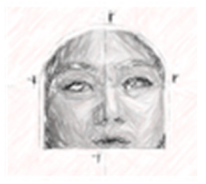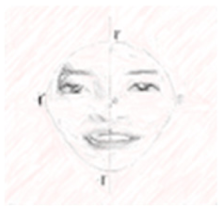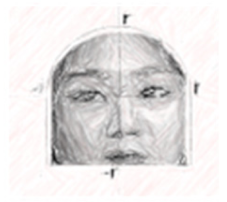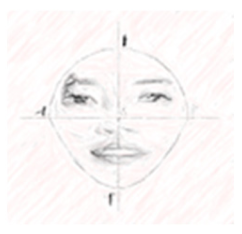Secondary Teacher Candidates’ Mathematical Modeling Task Design and Revision
Abstract
:1. Introduction
2. Literature Review
2.1. Modeling Framework
2.2. Modeling Task Design in Teacher Education
2.3. Related Studies
2.4. Situating the Study
3. Methods
3.1. Participants
3.2. Curriculum of Modeling Task Design
3.3. Data Collection
3.4. Data Analysis
4. Results
4.1. DRS in Revising Mathematical Modeling Tasks
4.1.1. G1’s Modeling Task on Public Transportation Vehicle Scheduling Optimization
4.1.2. G4’s Modeling Task on the Effective Use of Sunscreen According to Face Shape
4.2. Emerging Pedagogical Ideas from Revising Tasks/Rubrics
4.2.1. Need for Developing Modeling Tasks to Pique (Student) Interest
4.2.2. Need for Assessment That Impacts Student Learning
4.2.3. Need for a Body of Modeling Tasks and Rubrics as an Interactive Process
4.2.4. Need for Diverse Thinking by Students in the Design of Modeling Tasks
4.2.5. Need for Developing a Rubric with a Clear Scoring Scheme and a Rich Description of Acceptable Methods and Solutions
5. Discussion
6. Implications
Supplementary Materials
Author Contributions
Funding
Institutional Review Board Statement
Informed Consent Statement
Data Availability Statement
Conflicts of Interest
References
- Blum, W. Quality teaching of mathematical modelling: What do we know, what can we do? In Proceedings of the 12th International Congress on Mathematical Education, Seoul, Korea, 8–15 July 2012; Cho, S.J., Ed.; Springer International Publishing: Cham, Switzerland, 2015; pp. 73–96. [Google Scholar]
- Greefrath, G. Problem Solving Methods for Mathematical Modeling. In Mathematical Modelling in Education Research and Practice. Cultural, Social and Cognitive Influences ICTMA 16; Stillman, G., Blum, W., Biembengut, M.S., Eds.; Springer: New York, NY, USA, 2015; pp. 173–183. [Google Scholar]
- Henn, H.-W. Modelling Pedagogy—Overview. In Modelling and Applications in Mathematics Education. The 14th ICMI Study; Blum, W., Galbraith, P.L., Henn, H.-W., Niss, M., Eds.; Springer: New York, NY, USA, 2007; pp. 321–324. [Google Scholar]
- Kaiser, G.; Stender, P. Complex Modelling Problems in Co-Operative, Self-Directed Learning Environments. In Teaching Mathematical Modelling: Connecting to Research and Practice; Stillman, G., Kaiser, G., Blum, W., Brown, J., Eds.; Springer: Dordrecht, The Netherlands, 2013; pp. 277–293. [Google Scholar]
- Hernández, M.L.; Levy, R.; Felton-Koestler, M.D.; Zbiek, R.M. Mathematical modeling in the high school curriculum. Math. Teach. 2017, 110, 336–342. [Google Scholar] [CrossRef]
- Maaß, K. What are modelling competencies? Zent. Didakt. Math. ZDM 2006, 38, 113–142. [Google Scholar] [CrossRef]
- Staats, S.; Robertson, D. Designing tasks for math modeling in college algebra: A critical review. J. Coll. Teach. Learn. 2014, 11, 85–93. [Google Scholar] [CrossRef]
- Alhammouri, A.; Durkee, J.; Foley, G.D. Where to place a post? Engaging students in the mathematical modeling process. Ohio J. Sch. Math. 2017, 75, 41–48. [Google Scholar]
- Cavey, L.O.; Champion, J. Learning Secondary School Mathematics through Authentic Mathematical Modelling Tasks. In Mathematical Modelling and Modelling Mathematics; Hirsch, C.R., McDuffie, A.R., Eds.; NCTM: Reston, VA, USA, 2016; pp. 131–141. [Google Scholar]
- Chevallard, Y. Fundamental Concepts in Didactics: Perspectives Provided by an Anthropological Approach. In Research in Didactique of Mathematics: Selected Papers; Douady, R., Mercier, A., Eds.; La Pensee Sauvage: Grenoble, France, 1992; pp. 131–167. [Google Scholar]
- Cobb, P.; Yackel, E. Constructivist, emergent, and sociocultural perspectives in the context of developmental research. Educ. Psychol. 1996, 31, 175–190. [Google Scholar]
- Lim, W.; Lee, K.-H. Case study of the didactic transposition of teaching quadratic functions using realistic mathematics education and a traditional approach: Two teachers implementations and reflections. J. Educ. Res. Math. 2018, 28, 27–47. [Google Scholar] [CrossRef]
- Jacobs, V.R.; Lamb, L.C.; Philipp, R. Professional noticing of children’s mathematical thinking. J. Res. Math. Educ. 2010, 41, 169–202. [Google Scholar] [CrossRef]
- Kelly, C. Using manipulatives in mathematical problem solving: A performance-bases analysis. Mont. Math. Enthus. 2006, 3, 184–193. [Google Scholar]
- Poon, C.; Yeo, K.; Ahmad, N. Understand addition through modeling and manipulation of concrete materials. J. Educ. Pract. 2012, 3, 55–66. [Google Scholar]
- Lee, K.H. Modeling of and conjecturing on a soccer ball in a Korean eighth grade mathematics classroom. Int. J. Sci. Math. Educ. 2011, 9, 751–769. [Google Scholar] [CrossRef]
- Park, J.; Park, M.S.; Park, M.; Cho, J.; Lee, K.H. Mathematical modeling as a facilitator to conceptualization of the derivative and the integral in a spreadsheet environment. Teach. Math. Appl. Int. J. IMA 2013, 32, 123–139. [Google Scholar]
- Harwood, R.C. logistics of mathematical modeling-focused projects. PRIMUS 2017, 28, 360–385. [Google Scholar] [CrossRef]
- Zbiek, R.M.; Conner, A. Beyond motivation: Exploring mathematical modeling as a context for deepening students’ understandings of curricular mathematics. Educ. Stud. Math. 2006, 63, 89–112. [Google Scholar] [CrossRef]
- Guerrero-Ortiz, C.; Mena-Lorca, J.; Soto, A.M. Fostering transit between real world and mathematical world: Some phases on the modeling cycle. Int. J. Sci. Math. Educ. 2018, 16, 1605–1628. [Google Scholar] [CrossRef]
- National Council of Teachers of Mathematics. Assessment Standards for School Mathematics; NCTM: Reston, VA, USA, 1995. [Google Scholar]
- National Council of Teachers of Mathematics. Principles and Standards for School Mathematics; NCTM: Reston, VA, USA, 2000. [Google Scholar]
- Bleiler-Baxter, S.K.; Barlow, A.T.; Stephens, D.C. Moving beyond Context: Challenges in Modeling Instruction. In Mathematical Modelling and Modelling Mathematics; Hirsch, C.R., McDuffie, A.R., Eds.; NCTM: Reston, VA, USA, 2016; pp. 53–64. [Google Scholar]
- Sánchez-Ruiz, L.-M.; Moll-López, S.; Moraño-Fernández, J.-A.; Roselló, M.-D. Dynamical continuous discrete assessment of competencies achievement: An approach to continuous assessment. Mathematics 2021, 9, 2082. [Google Scholar] [CrossRef]
- Niss, M.; Bruder, R.; Planas, N.; Turner, R.; Villa-Ochoa, J.A. Survey team on: Conceptualisations of the role of competencies, knowing and knowledge in mathematics education research. ZDM Math. Educ. 2016, 48, 611–632. [Google Scholar] [CrossRef] [Green Version]
| DRS | Operational Definitions |
|---|---|
| Revising complicated computations for simpler problems (S strategy) | When the students’ solution process involves complicated computations that are in conflict with the learning goal of the task, the task could be simplified. |
| Breaking the task into smaller subtasks (B strategy) | When one task involves multiple layers of response, the task could be broken down into smaller subtasks. |
| Revising assumptions in the context of the task for articulation (A strategy) | When student responses demonstrate their confusion in understanding the problem, the assumptions can be revised in the context of the task. |
| Using wording appropriate for student levels (W strategy) | When wording is too difficult or lacks information, new words or additional information can be added to support the student in understanding the modeling situation. |
| Revising notations, such as symbols or letters that can cause student misunderstandings or mistakes (N strategy) | When students display difficulty in understanding the problem due to certain notations, the notations can be revised to clarify their meaning. |
| Using technology to do extended calculations (T strategy) | When the solution process necessitates complex calculations, the task can be revised so that the use of technology is allowed. |
| DRS | Original Version | Revised Version |
|---|---|---|
| W strategy | No explanation of approximation | (a) Suppose a continuous function on an arbitrary do-main, such as a radical function like . We know that it could be easier to deal with polyno-mials such as quadratics or cubics than to deal with a radical function, and the method of approximation may be useful to model some situations. For example, an approximation of can be over any particular interval of the domain. Both func-tions have the same y-value, 4, at x = 1, and their func-tion values are close to each other in the neighborhood of x = 1. Hence, both functions share similar properties. In addition, the radical function can be approximated using a cubic function. It is known that the cubic function is even closer to the and shares more similar properties than the quadratic function does. |
| DRS | Original Version | Revised Version |
|---|---|---|
| N strategy | The profit function of the time interval was approximated by where t stands for the time interval in minutes. The company can maximize its profit to 300 (ten-thousand won) when t = 10, and so they have scheduled vehicles every 10 min for the last three years. … After investigating relevant factors, it is expected that when the time interval de-creases by from 10 min during rush hours, the profit will change by . When the time interval increases by from 10 min, the profit will change by g(t2). | (b) The profit function of the time interval was approximated by where t stands for the time interval in minutes. The company can maximize its profit to 300 (ten-thousand won) when t = 10, and so they have scheduled vehicles every 10 min for the last three years. … After investigating relevant factors, it is expected that when the time interval changes by from 10 min during rush hours, the ex-pected profit will change by . When the time interval changes by from 10 min, the expected profit will change by h(x). |
| DRS | Original Version | Revised Version | ||||
|---|---|---|---|---|---|---|
| N strategy | (1) The following table shows a part of a chart that an employee of this company used to find h(t) on a closed interval [0, 170]. Find h(t). | [1–1] The following table shows a part of a chart that an employee of this company used to find h(x) on an interval [0, 170). Find h(x). | ||||
| 1 | 4 | 1 | 4 | |||
| 80 | 140 | 80 | 140 | |||
| 80 | 80 | |||||
| DRS | Original Version | Revised Version |
|---|---|---|
| W strategy | (2) In the table above, what is the meaning of the derivative h′(1)? Explain its meaning in relation to the profit. | [1–2] For any constant we have . When the time interval between vehicles has changed by a min from 10 min, what happens to the profit if the time interval gets greater than (10 + a)? Explain what happens, including its mathematical meaning. |
| DRS | Original Version | Revised Version |
|---|---|---|
| S & W Strategies | (3) Draw, by using the table of the increase and decrease in y-values, a sketch of the graphs, y = g(x) defined on the interval (−10, 0) and y = h(x) defined on the interval [0, 170]. | [2–1] Construct a table of the increase and decrease in y-values for each of the y = g(x) defined on the interval (−10, 0) and y = h(x) defined on the interval [0, 170). Using the table, graph the two functions y = g(x) and y = h(x). (Note: There is no need to find the second derivative.) |
| DRS | Original Version | Revised Version |
|---|---|---|
| B Strategy | (4) Considering this particular bus line, find the range of time intervals between vehicles during rush hours that would generate more profit than the last three years, and find the time interval between vehicles during rush hours that will maximize profits. | [2–2] Considering this particular bus line, find the range of time intervals between vehicles during rush hours that would generate more profit than the last three years. [2–3] Building on your answer to question [2–2] find the time interval between vehicles during rush hours that will maximize profits. |
| DRS | Original Version | Revised Version | ||||
|---|---|---|---|---|---|---|
| W strategy | … The following are the face shapes of Hosung, Naree, and Susan. Suppose the midpoint of the segment between the top of the forehead and the bottom of the chin is point O. Then, the distance from the top of the forehead to point O and the distance from the bottom of the chin to point O are both r. ) (Note: Please assume that the surface of the face is flat, ignoring all the curvature.) | … The following are the face shapes of Hosung, Naree, and Susan. Suppose the midpoint of the segment between the top of the forehead and the bottom of the chin is point O. Then the distance from the top of the forehead to point O and the distance from the bottom of the chin to point O are both r. ) (Note: Please assume that the surface of the face is flat, ignoring all the curvature.) | ||||
 |  |  |  |  |  | |
| Hosung (Round shape: Circle) | Naree (Angular: Half-circle + Quadrilateral) | Susan (Egg shape: Half-circle + Quadratic curve) | Hosung (Round shape: Circle) | Naree (Angular: Half-circle + Rectangle) | Susan (Egg shape: Half-circle + Quadratic function) | |
| DRS | Original Version | Revised Version |
|---|---|---|
| W strategy | (1) Find an expression for the area of the face shape of Hosung, Naree, and Susan in terms of r and explain the process. | (1) Find an expression for the area of the face of Hosung, Naree, and Susan in terms of r and explain the process. |
| DRS | Original Version | Revised Version |
|---|---|---|
| A & W strategies | (2) When the sunscreen’s volume is 30 mL, write an expression for the maximum number of times that each person can apply the sunscreen on their faces. In doing so, use the symbol ‘[ ]’ and the variables t and r and explain the solution process. Note that t represents the thickness of the sunscreen layer and [x] represents the greatest integer less than or equal to x. | (2) When the sunscreen’s volume is 30 mL, write an expression for the maximum number of times that each person can apply the sunscreen on their faces, respectively. (Note: Only applying to the entire face is counted.) In doing so, use the symbol ‘[ ]’ and the variables t and r and explain the solution process. Note that t represents the thickness of the sunscreen layer and [x] represents the greatest integer less than or equal to x. |
| DRS | Original Version | Revised Version |
|---|---|---|
| T & W strategies | (3) Use the following conditions and assume that they apply the sunscreen on their faces once per day. Explain who will be able to use the sunscreen the longest time. (Note: Assume π = 3 in your calculation.) Conditions: The thickness of the sunscreen layer is 0.005 cm on Hosung, 0.003 cm on Naree, and 0.004 cm on Susan. Assume r is 9 cm. | (3) Use the following conditions and assume that they apply the sunscreen on their faces once per day and that the volume of the sunscreen is 30 mL. Explain who will be able to use the sunscreen the longest time based on your results in question (2). (Note: Assume π = 3 in your calculation.)  Conditions: The thickness of the sunscreen layer is 0.005 cm on Hosung, 0.003 cm on Naree, and 0.004 cm on Susan. Assume r is 9 cm. |
Publisher’s Note: MDPI stays neutral with regard to jurisdictional claims in published maps and institutional affiliations. |
© 2021 by the authors. Licensee MDPI, Basel, Switzerland. This article is an open access article distributed under the terms and conditions of the Creative Commons Attribution (CC BY) license (https://creativecommons.org/licenses/by/4.0/).
Share and Cite
Kim, D.-J.; Choi, S.-H.; Lee, Y.; Lim, W. Secondary Teacher Candidates’ Mathematical Modeling Task Design and Revision. Mathematics 2021, 9, 2933. https://doi.org/10.3390/math9222933
Kim D-J, Choi S-H, Lee Y, Lim W. Secondary Teacher Candidates’ Mathematical Modeling Task Design and Revision. Mathematics. 2021; 9(22):2933. https://doi.org/10.3390/math9222933
Chicago/Turabian StyleKim, Dong-Joong, Sang-Ho Choi, Younhee Lee, and Woong Lim. 2021. "Secondary Teacher Candidates’ Mathematical Modeling Task Design and Revision" Mathematics 9, no. 22: 2933. https://doi.org/10.3390/math9222933
APA StyleKim, D.-J., Choi, S.-H., Lee, Y., & Lim, W. (2021). Secondary Teacher Candidates’ Mathematical Modeling Task Design and Revision. Mathematics, 9(22), 2933. https://doi.org/10.3390/math9222933






